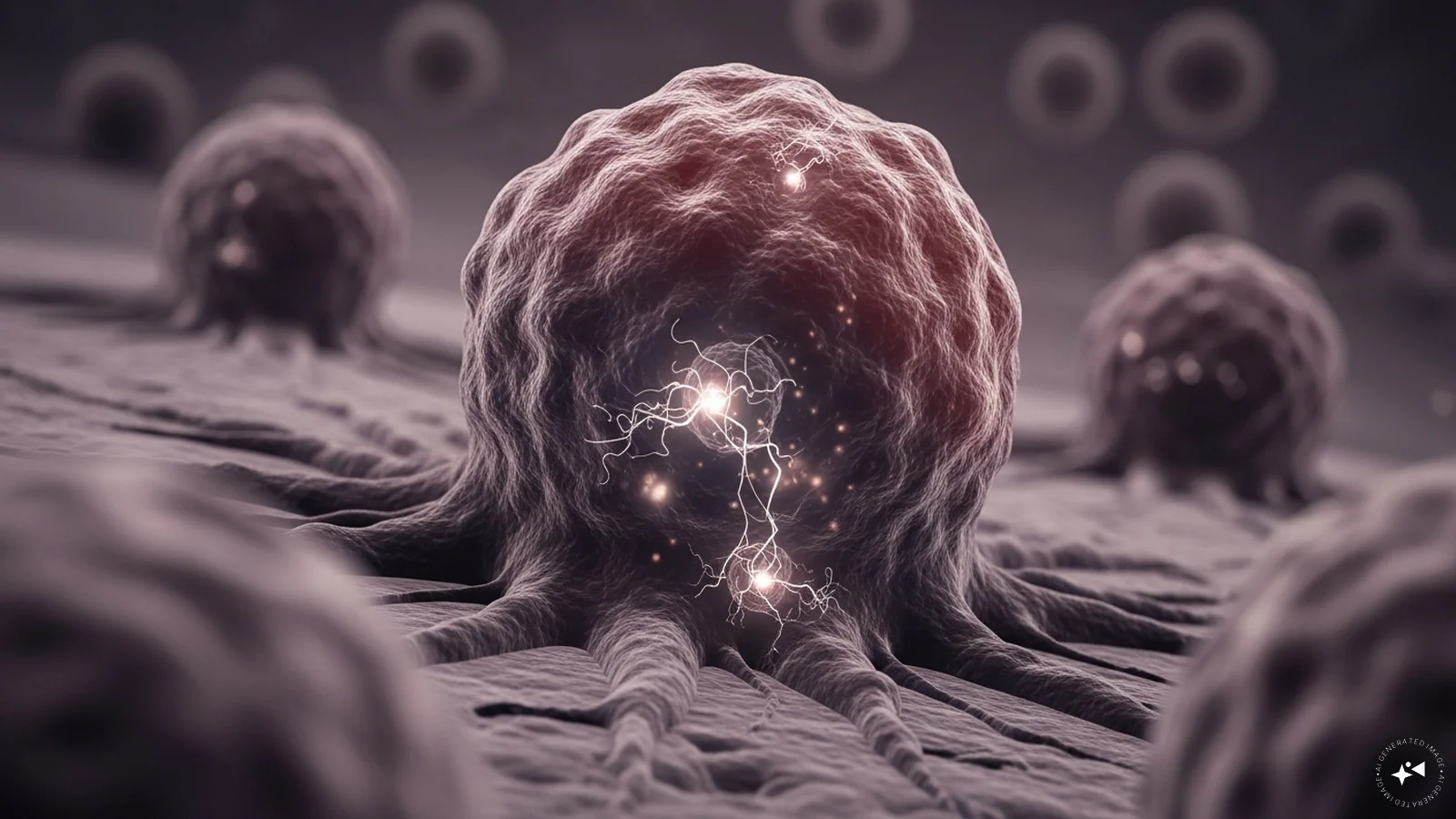By Manjiri Joshi,News18
Copyright news18

Is cancer a genetic or lifestyle disease? While the disorder may be genetic, it doesn’t necessarily mean it is inherited, says Cleveland Clinic. What does this answer mean? What does the recent research suggest?
Cancer is a large group of diseases with one thing in common — normal cells that become cancerous, multiply and spread. There are over 100 types of cancer. Healthcare providers categorise them into three types – solid cancers (skin, breast, colon, lungs, bones, connective issues), blood cancers and mixed.
Data from 43 registries show that 11 out of every 100 people in India run the risk of developing cancer at some point during their life. In 2024 alone, India recorded approximately 15.6 lakh new cancer cases and around 8.74 lakh deaths due to the disease, it said.
Is cancer a genetic disorder? Is it inherited?
Cleveland Clinic says cancer happens when genes that manage cell activity mutate (change). They create abnormal cells that divide and multiply, eventually disrupting how your body works. These cells create cancer clusters, or tumours. Cancerous cells may break away from tumours and travel to other areas of your body through your lymphatic system or bloodstream. Eventually, the abnormal cells crowd out normal blood cells.
According to medical researchers, inherited genetic mutations or changes you can’t control cause about 5% to 10% of all cancers. More often, cancer occurs as an acquired genetic mutation (change). That means it happens over the course of your life.
What does research say on genetic causes?
Genetic causes of cancer are inherited mutations (e.g. BRCA1/2 etc), family history, DNA damage, molecular/genomic variant predispositions.
A GWAS meta-analysis involving more than 17,000 endometrial cancer cases and 289,000 controls identified five new genetic loci associated with risk of endometrial cancer. The paper was published in eBioMedicine on July 8, 2025. GWAS’s paper in Genome Biology on July 7 uncovered new genetic susceptibility loci for nasopharyngeal carcinoma common in East and Southeast Asia.
In a study published by Mount Sinai researchers using data from the Clinical Proteomic Tumor Analysis Consortium (CPTAC) in April 2025, scientists showed that “inherited germline variants influence not just cancer risk but also tumour biology—such as how tumors behave and how they respond to treatment”.
A massive genetic analysis by the National Cancer Institute (NCI) and international partners, published on April 26, 2024, identified 50 new genetic risk loci for kidney cancer. Researchers from Iceland’s deCODE genetics, in collaboration with Amgen in October 2024, identified six new rare gene variants linked to increased risk of various cancers.
In March 2025, researchers at Stanford analysed millions of genomes across 13 major cancer types and found around 380 inherited DNA variants that influence gene expression related to cancer risk.
What does research say on environmental or lifestyle factors causing cancer?
Lifestyle and environmental causes are smoking, diet, obesity, pollution, infectious agents, sedentary behaviour, exposure to toxins.
A multi-country study across 871 non-smoking lung cancer patients published this year showed that air pollution can drive the same kind of DNA mutations seen in smokers. The research, called the Sherlock-Lung Study, revealed that environmental exposure to pollutants in the air is capable of mimicking tobacco’s effects at the molecular level.
A study published in the journal Cancers this year showed that certain genetic backgrounds can modify the effect of antibiotics on colorectal cancer risk. This means individuals with specific gene variants may be more vulnerable to cancer if they use antibiotics excessively — pointing to a gene-environment interaction. The research demonstrates how lifestyle and genetics work together to determine cancer susceptibility.
In 2023, open access journal BMJ Oncology, published a paper on the “79% increase in new cases of cancer among the under 50s around the world over the past three decades (1990-2019)”. Breast cancer accounted for the highest number of ‘early onset’ cases in this age group in 2019. But cancers of the windpipe (nasopharynx) and prostate have risen the fastest since 1990, the analysis reveals. “Cancers exacting the heaviest death toll and compromising health the most among younger adults in 2019 were those of the breast, windpipe, lung, bowel, and stomach,” it said.
While it spoke about genetic factors, it highlighted how diets high in red meat and salt, and low in fruit and milk; alcohol consumption; and tobacco use are the main risk factors underlying the most common cancers among the under 50s, with physical inactivity, excess weight, and high blood sugar contributory factors.
Among other factors, a paper by Pubmed in 2020, termed “gene-environment interaction as a determining factor for cancer development in some experiments”.
What is the conclusion?
Genetic/hereditary factors account for approximately 5 20% of cancer cases, depending on type, age, family history.
Lifestyle, environmental and modifiable risk factors — tobacco use, diet, obesity, physical inactivity, pollution, infectious agents (e.g. HPV for cervical cancer), delayed screening and late diagnosis — are what you need to worry about.
Can cancer be prevented?
Public health and prevention efforts should focus on reducing risks such as smoking, diet, obesity, pollution, infection prevention, screening, alongside expanding genetic/genomic research, say experts.
For you, the simplest answer lies in the latest research published in Pubmed in August: “A single bout of RT or HIIT can increase levels of anti-cancer myokines and reduce the growth of MDA-MB-231 cells in vitro in survivors of breast cancer, potentially contributing to a lower risk of recurrence.” In simple words, even a single, intense workout session can trigger molecular changes that suppress the growth of cancer cells.



